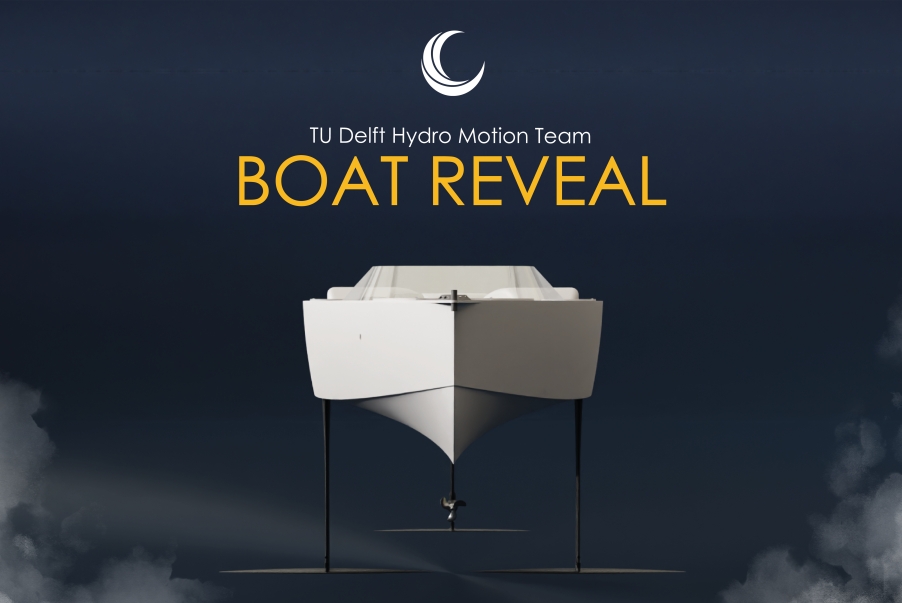Students of the TU Delft Hydro Motion Team have revealed their hydrogen-powered boat Aurora. The boat is constructed as lightweight as possible and hydrofoils allow it to “fly” over the surface of the water.
The boat was unveiled to the world for the first time on 8 May in the Onderzeebootloods in Rotterdam. It was christened by Dutch TV presenter John Williams after a presentation by Project Manager Helena Westermann.
The boat is a follow-up to the TU Delft’s previous solar-powered boats. In 2021, the TU Delft Solar Boat Team realised its first “flying” hydrogen boat, after which the team renamed itself to the TU Delft Hydro Motion Team. Last year, saw the realisation of its first monohull version of this boat.
Every year, the student team competes in the Energy Boat Race in Monaco. Last year, they could not sail the long distance race after the boat broke down due to problems with the energy management system.
Watch a video of the reveal below.
The Aurora hydrogen boat
The hydrogen boat is optimised for foiling. In order to ensure that the boat is manoeuvrable and easily transportable, the students selected a monohull. This means that the boat is made out of one piece. To optimise the boat for foiling, all components are as lightweight as possible, in addition, the hull shape has been optimised.
The hull has been constructed out of carbon fibre. This material is lightweight, but also really strong.
Also read: VIDEO: TU Delft Hydro Motion Team reveals latest hydrofoil hydrogen boat
16 kg of hydrogen
The hydrogen we use to propel the boat is stored in a tank, located under the captains. The hydrogen is stored in a gaseous state at 350 bar. The tank measures 2.3 metres long and has a diameter of 50 centimetres. Like last year’s design, the boat will be carrying two tanks of hydrogen, this is 16 kilogrammes, which is double the amount of last year’s boat.
From the tank the hydrogen goes to the fuel cell.
A flying boat
Besides building a hydrogen-powered boat in just one year, the students also make it fly. When a boat picks-up more speed, the drag with the water increases leading to more energy usage. By making the boat “fly”, it becomes more efficient.
When sailing, the foils create an upwards force, known as lift. When sailing faster, the foils create more lift. The foils and the struts then lift the boat out of the water when reaching a take off speed of 25 km/h.
The waves on the ocean influence the balance of the boat. That’s why the foils are actively controlled with a height control system. Three sensors constantly measure the height and orientation of the boat.
Also read: [VIDEO] TU Delft students present world’s first ‘flying’ hydrogen boat
Propulsion
Just like many other boats, the TU Delft students use a propellor to move forward. However, with the struts and wings underneath the boat, the mechanism connecting the propellor to the electro motor is quite complex. The propellor has to be at the end of the strut so it will always be submerged even when flying.
The electro motor, however, cannot fit in this strut. This make the usage of a driveline necessary. The driveline translates the rotating of the electro motor down the strut into the propellor, making it spin. This is how the boat keeps moving forward even when flying.
Also read: Even without Wings TU Delft Solar Boat Wins World Championships








